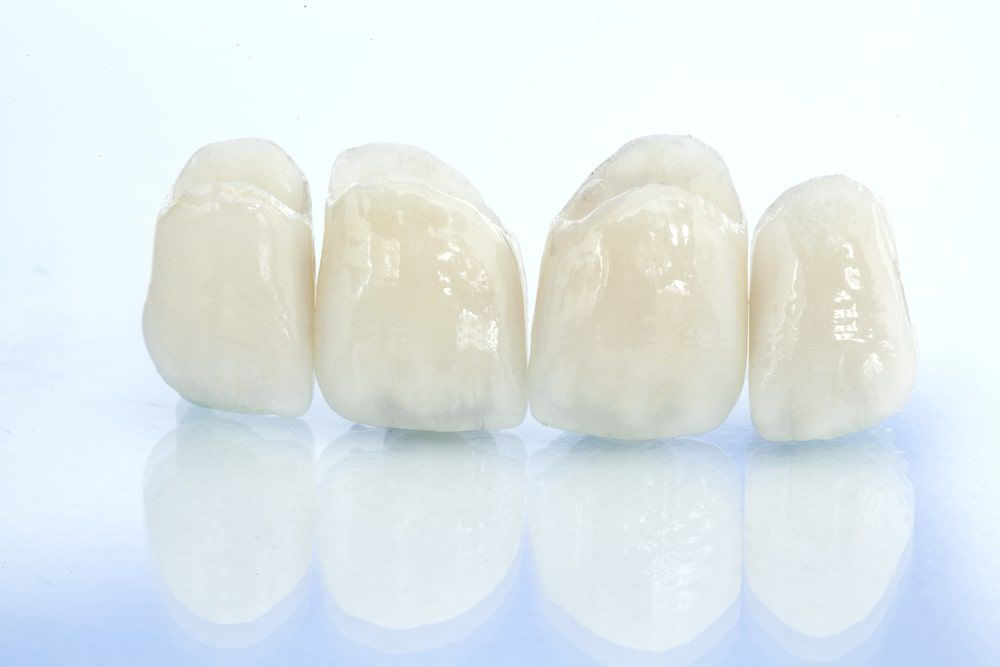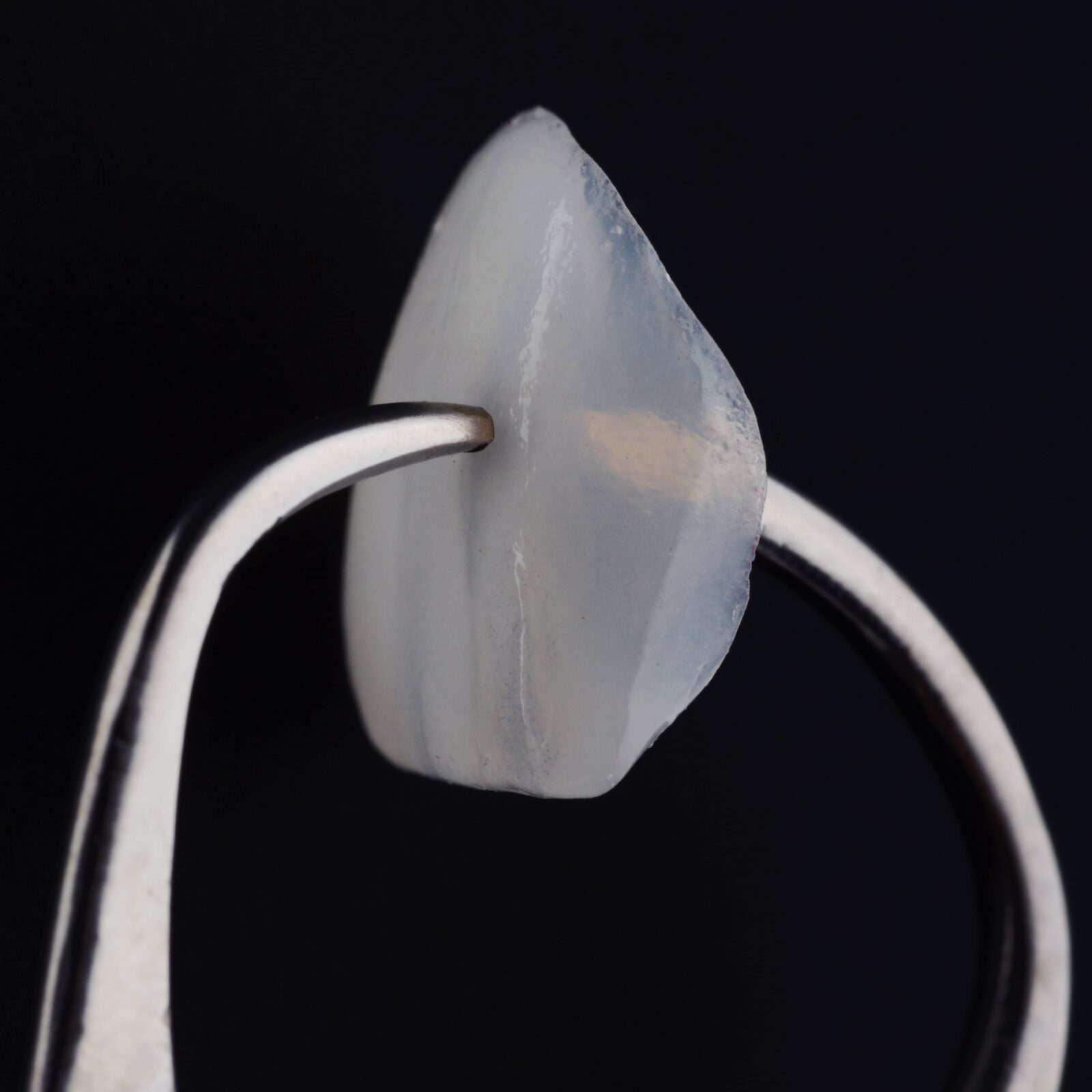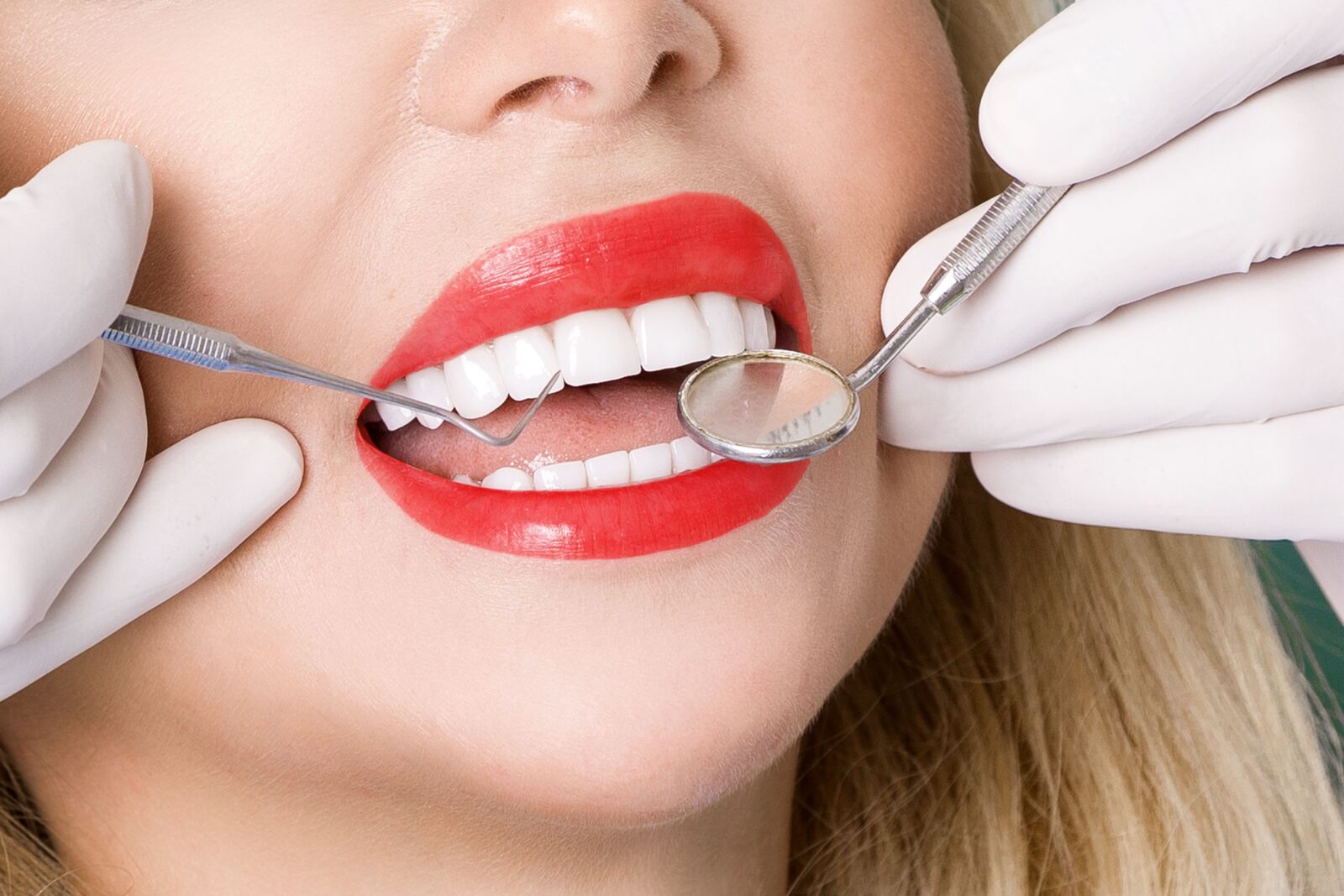Are you looking to enhance the appearance of your smile but confused about whether to go for dental crowns or veneers? Both options offer remarkable aesthetic improvements, but they differ in terms of application, purpose, and the condition of your teeth. Understanding the distinctions between the two can help you make an informed decision. In this blog, we will explore the factors to consider when choosing between dental crowns and veneers.
What are dental crowns?

Dental crowns are custom-made restorations that mimic the shape, size, and color of your natural teeth. They are typically recommended for teeth with extensive decay, fractures, or after root canal treatment. Crowns are designed to restore the tooth’s strength, functionality, and appearance, providing long-lasting results. They offer the following benefits:
- Restoration of Damaged Teeth: Dental crowns can repair teeth that are severely decayed, cracked, or fractured, restoring their strength and preventing further damage.
- Protection of Weakened Teeth: Crowns act as a protective barrier, safeguarding weakened teeth from additional wear, fractures, or infections.
- Aesthetic Enhancement: Crowns can improve the appearance of misshapen, discolored, or unevenly sized teeth, enhancing your smile’s overall aesthetic appeal.
- Longevity: With proper care and maintenance, dental crowns can last for many years, providing a durable and functional solution for damaged teeth.
How are dental crowns placed?
The dental crown procedure typically involves several steps:
- Evaluation and Treatment Planning: Your dentist will examine your teeth, discuss your goals, and develop a treatment plan tailored to your needs.
- Tooth Preparation: The affected tooth is prepared by removing a small amount of enamel to create space for the crown. In some cases, additional tooth structure may need to be removed to address decay or damage.
- Impression: An impression of the prepared tooth is taken to create a custom-made crown that fits perfectly.
- Temporary Crown: While your permanent crown is being fabricated, a temporary crown is placed to protect the prepared tooth.
- Crown Placement: Once the permanent crown is ready, it is checked for fit, color, and appearance. The crown is then permanently bonded to the tooth using dental cement.
What are veneers?
Dental veneers are cosmetic restorations designed to address a range of dental imperfections. Whether you have discolored teeth, chipped enamel, misalignments, or gaps between your teeth, veneers can provide a natural-looking solution. These thin shells are typically made from porcelain or composite resin and are customized to match the color, shape, and size of your natural teeth. They offer the following benefits:

- Aesthetic Transformation: Dental veneers offer a dramatic improvement in the appearance of your smile. They can effectively correct a wide range of dental flaws, including tooth discoloration, minor misalignments, and enamel irregularities.
- Natural Appearance: Porcelain veneers, in particular, mimic the translucent properties of natural teeth, providing a realistic and beautiful smile. They reflect light just like natural enamel, ensuring a seamless integration with your existing teeth.
- Minimally Invasive: Compared to other restorative treatments, veneers require minimal tooth preparation. Only a thin layer of enamel is usually removed to accommodate the veneer, preserving the majority of your natural tooth structure.
- Stain-Resistant: Porcelain veneers are highly resistant to staining, allowing you to enjoy a bright, white smile for years to come. However, it’s still important to maintain good oral hygiene habits and avoid excessive consumption of stain-causing substances like coffee, tea, or tobacco.
How are veneers placed?
The process of getting dental veneers typically involves the following steps:
- Consultation and Treatment Planning: During your initial consultation, your dentist will evaluate your dental health, discuss your goals, and develop a personalized treatment plan to achieve your desired results.
- Tooth Preparation: A small amount of enamel will be removed from the front surface of the teeth receiving veneers. This ensures a proper fit and allows space for the veneer to be bonded.
- Impression and Temporary Veneers: An impression of your prepared teeth will be taken to create custom-made veneers. While your permanent veneers are being fabricated, temporary veneers may be placed to protect your teeth.
- Veneer Placement: Once your custom veneers are ready, your dentist will check their fit, color, and appearance. The veneers will be bonded to your teeth using dental cement, creating a secure and long-lasting result.
How to Choose Between Crowns and Veneers:
Now that you know a little more about each treatment, let’s discuss how you can choose between the two. Choosing between dental crowns and veneers depends on several factors, including the specific dental needs, desired treatment goals, and the condition of your teeth. Here are some considerations to help you make an informed decision:
- Tooth Condition: Dental crowns are typically recommended for teeth that are severely damaged, decayed, or have undergone root canal treatment. Crowns provide strength, protection, and support to compromised teeth. Veneers, on the other hand, are more suitable for teeth that are relatively healthy but have cosmetic concerns such as discoloration, chips, or gaps.
- Treatment Goals: Determine your desired outcome from the treatment. If you primarily want to restore the functionality of a damaged tooth while also improving its appearance, a dental crown may be the ideal choice. However, if your main focus is enhancing the cosmetic aspects of your smile, such as correcting tooth discoloration or minor misalignments, veneers can provide significant aesthetic improvements.
- Tooth Preparation: Consider the level of tooth preparation involved. Dental crowns require more extensive tooth reshaping and removal of enamel to accommodate the crown. Veneers, on the other hand, typically involve minimal tooth preparation, often requiring only a thin layer of enamel to be removed.
- Aesthetic Results: Evaluate the aesthetic results achievable with both crowns and veneers. Dental crowns can provide excellent aesthetic outcomes, particularly for severely damaged or discolored teeth. They can be customized in terms of color, shape, and size to create a natural and pleasing appearance. Veneers primarily focus on cosmetic enhancements, improving the color, shape, and alignment of your teeth for a beautiful smile transformation.
- Durability and Maintenance: Consider the long-term durability and maintenance requirements of each option. Dental crowns are known for their strength and durability, and with proper care, they can last for many years. Veneers are relatively thin and delicate, requiring regular care and maintenance to ensure their longevity. Avoid habits such as teeth grinding and biting on hard objects that can compromise the durability of veneers.
- Cost: Budget considerations may also influence your decision. Dental crowns typically involve a higher cost than veneers due to the materials used and the complexity of the treatment. However, the cost can vary depending on the number of teeth treated and the specific case. Discuss the financial aspects with your dentist and consider any dental insurance coverage you may have.
It’s essential to consult with a qualified dentist who can evaluate your oral health, discuss your treatment goals, and provide personalized recommendations based on your specific needs. Their expertise and guidance will help you make an informed choice between dental crowns and veneers, ensuring the best outcome for your smile.
In Conclusion
Ultimately, the choice between dental crowns and veneers depends on your specific dental needs, the condition of your teeth, and your desired outcome. Consulting with a qualified dentist will help you determine the most suitable option for achieving your dream smile. Remember, both dental crowns and veneers can dramatically transform your smile and boost your confidence.







